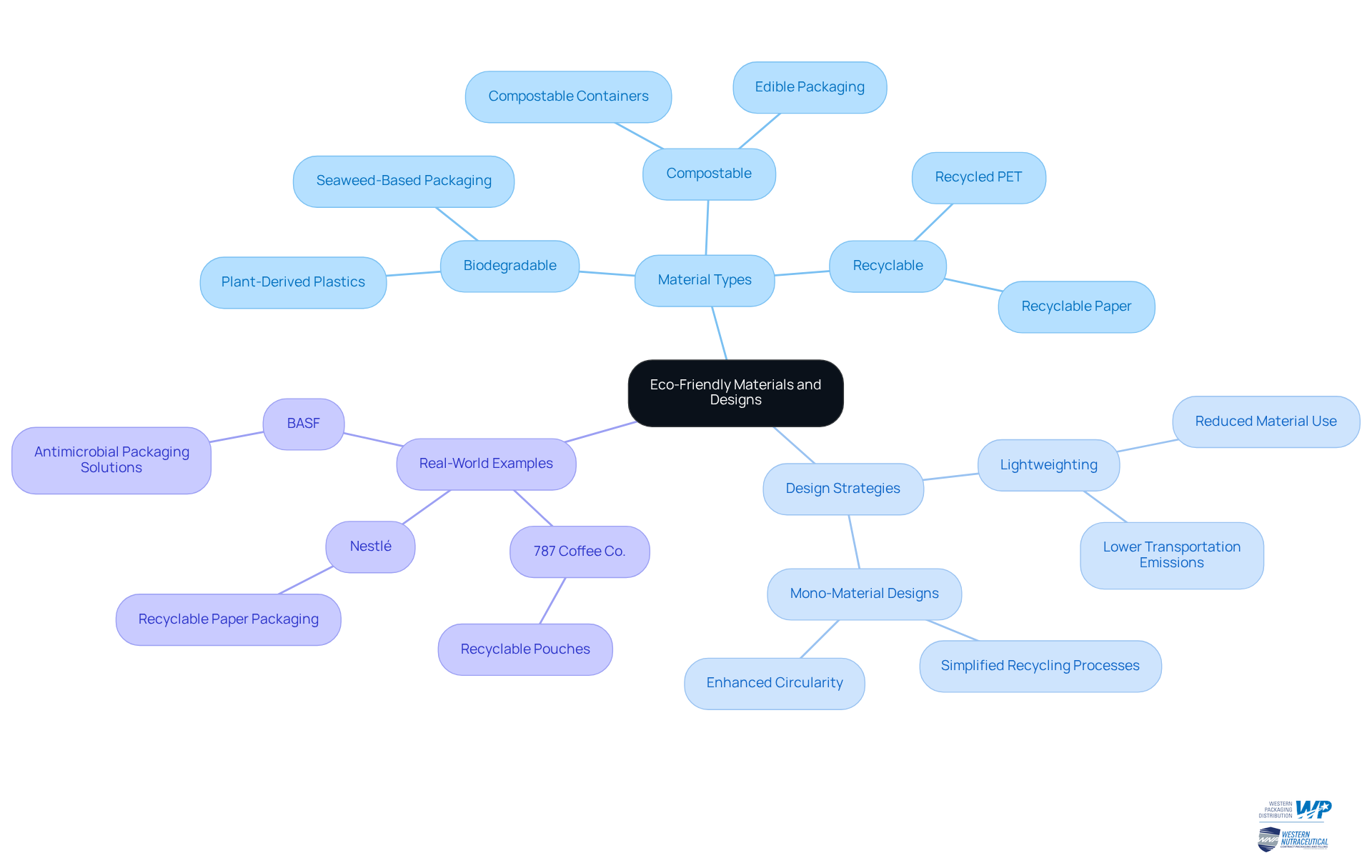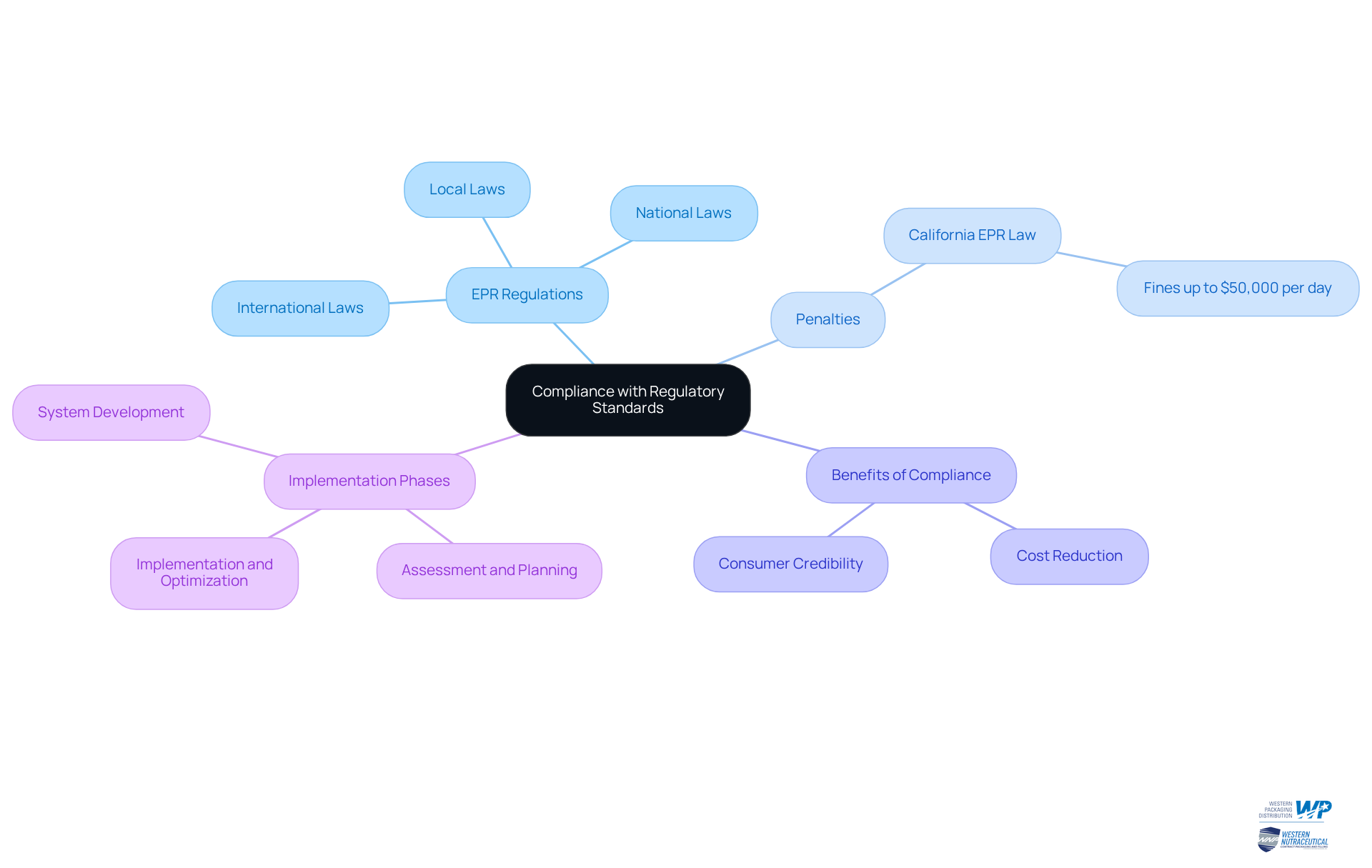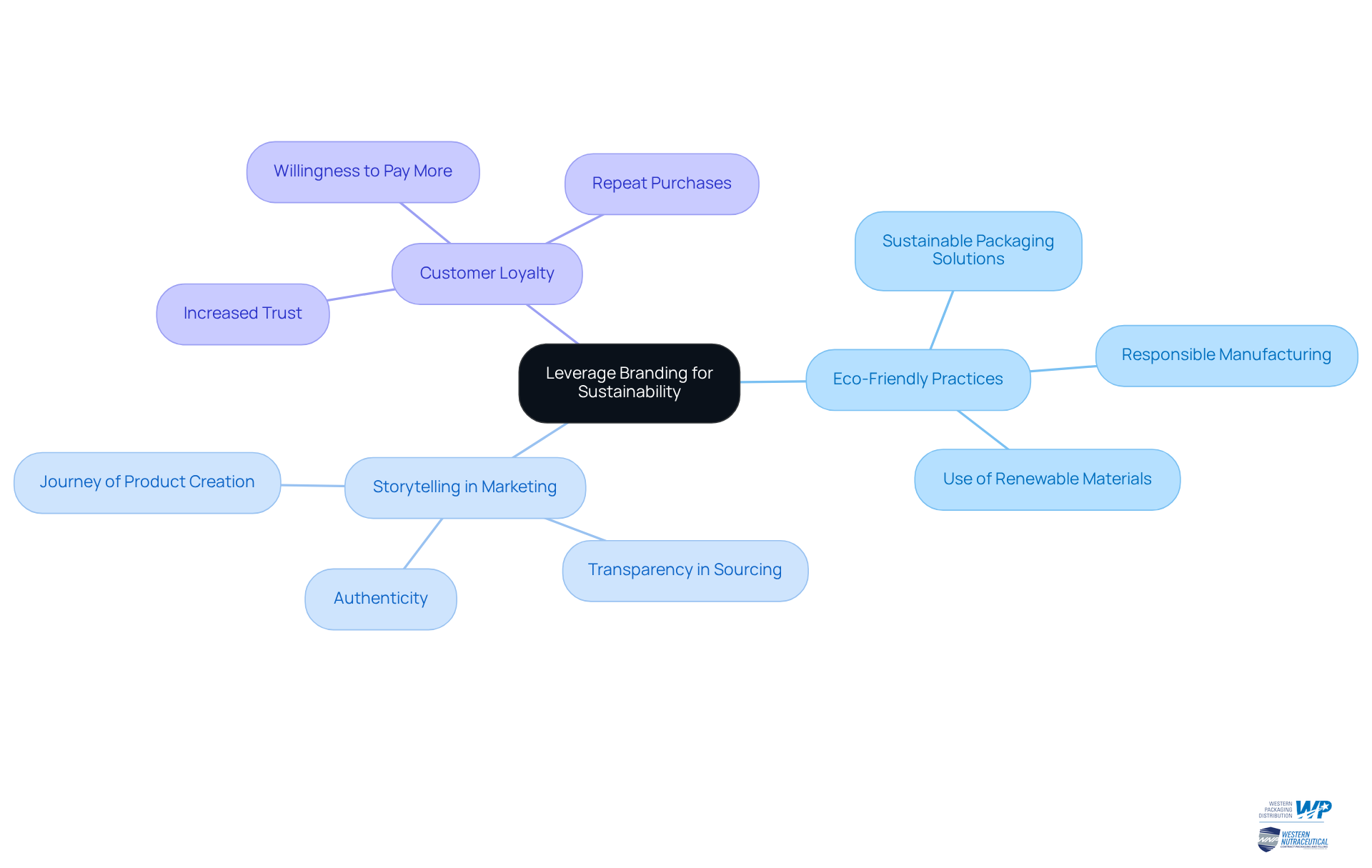Overview
The article presents best practices for sustainable bottle packaging solutions, underscoring the significance of eco-friendly materials, adherence to regulations, and effective branding strategies. It asserts that the adoption of sustainable practices not only mitigates environmental impact but also resonates with consumer preferences and complies with regulatory requirements. This alignment ultimately yields financial benefits for companies while enhancing their brand reputation.
Introduction
The shift towards sustainable packaging is no longer a fleeting trend; it has evolved into a vital component of business strategy as consumers increasingly demand eco-friendly options. Companies that adopt sustainable bottle packaging not only mitigate their environmental impact but also access a burgeoning market of conscientious buyers eager to support brands dedicated to sustainability.
However, with challenges such as elevated costs and regulatory compliance on the horizon, how can businesses adeptly navigate this landscape while preserving profitability and brand loyalty?
Understand the Importance of Sustainable Packaging
Bottle packaging solutions have transitioned from a mere trend to an essential component of modern business strategy. As environmental awareness grows, buyers increasingly prefer brands that demonstrate a commitment to sustainability. Recent studies indicate that:
- 77% of buyers consider recyclability to be extremely or very significant for sustainability.
- A considerable segment emphasizes the use of environmentally friendly substances in their purchasing decisions.
By adopting bottle packaging solutions that are eco-friendly, companies not only reduce their ecological footprint but also comply with regulatory standards and appeal to an expanding group of eco-conscious customers. Furthermore, eco-friendly containers can yield substantial cost reductions in resources and logistics, making this a financially prudent choice.
Prominent companies such as Coca-Cola and Unilever exemplify this shift, having pledged to utilize more eco-friendly materials in their containers. This commitment not only benefits the environment but also enhances their brand reputation. Notably:
- 87% of shoppers express that they would willingly purchase more eco-friendly products if they were easier to find.
- 51% of individuals in the US are prepared to pay more for environmentally friendly items.
The financial implications of this transition are considerable; the eco-friendly packaging market is projected to expand from USD 292.71 billion in 2024 to USD 423.56 billion by 2029. Companies that incorporate environmentally conscious practices in their bottle packaging solutions will be strategically positioned to thrive in a competitive landscape. However, businesses must also address challenges such as:
- Higher costs (39%)
- Limited availability (36%) of sustainable options, which can influence consumer purchasing decisions.

Implement Eco-Friendly Materials and Designs
To effectively implement eco-friendly materials and designs, businesses must prioritize the use of biodegradable, compostable, or recyclable materials. Options such as plant-derived plastics, recycled paper, and glass significantly reduce the environmental impact of packaging. For instance, brands like TIPA lead the way by offering compostable containers that decompose naturally, thereby minimizing waste.
Moreover, companies should focus on design strategies that reduce resource consumption without compromising product integrity. Lightweighting, for example, involves using less material to create containers that maintain effectiveness, thus lowering transportation emissions and costs. Additionally, brands can explore mono-material designs, which simplify recycling processes and enhance the circularity of packaging.
Real-world examples, such as the incorporation of recycled PET in beverage bottles, illustrate this approach, as it not only lessens dependence on virgin plastics but also resonates with environmentally conscious consumers. By prioritizing sustainable resources and innovative designs, companies can establish themselves as leaders in sustainability.

Ensure Compliance with Regulatory Standards
As sustainability regulations evolve, it is imperative for companies to remain vigilant regarding local, national, and international laws related to containers. Regular evaluations of container components and procedures are essential to ensure compliance with Extended Producer Responsibility (EPR) regulations, which mandate that manufacturers oversee the entire lifecycle of their materials. Non-compliance can result in substantial penalties; for instance, California's EPR law imposes fines of up to $50,000 per day for violations, highlighting the significant financial risks involved. Furthermore, California SB 54 aims for a 25% reduction in plastic usage by 2032, underscoring the urgency for compliance.
Engaging with industry organizations and regulatory bodies is crucial for staying informed about legislative changes. The U.S. Plastics Pact, for example, aims for all plastic packaging to be reusable, recyclable, or compostable by 2030, necessitating strategic adjustments across various sectors. Effective EPR programs can reduce municipal waste management costs by 15-30% and enhance collection rates by over 40%, showcasing the tangible benefits of compliance.
Proactively addressing compliance not only helps avoid penalties but also bolsters a company's credibility among consumers who are increasingly focused on corporate responsibility. Establishing a robust compliance strategy that includes regular employee training and collaboration with suppliers can further reinforce a company's commitment to eco-friendly practices. With the sustainable wrapping market projected to grow from USD 292.71 billion in 2024 to USD 423.56 billion by 2029, adhering to these regulations is not merely a legal obligation but a strategic advantage. Additionally, businesses should prepare for upcoming reporting obligations under new laws expected to commence by 2026, considering the specific phases of EPR implementation:
- Assessment and Planning
- System Development
- Implementation and Optimization

Leverage Branding to Promote Sustainability
To effectively leverage branding for promoting sustainability, companies must integrate their eco-friendly practices into their overall brand narrative. This involves clear dialogue regarding the substances employed, the sustainability of their bottle packaging solutions, and the ecological impact of their products. Brands such as Patagonia and Seventh Generation have successfully built their identities around sustainability, resonating with their target audiences.
Utilizing storytelling in marketing campaigns significantly enhances audience engagement. By sharing the journey of product creation—from sourcing materials to final presentation—brands can establish a deeper connection with individuals who value transparency and authenticity.
Moreover, incorporating sustainability into branding leads to increased customer loyalty. Research indicates that consumers are more inclined to endorse brands demonstrating a genuine commitment to environmental responsibility. By showcasing sustainable bottle packaging solutions through social media, packaging design, and advertising, companies can attract and retain eco-conscious consumers, ultimately driving sales and enhancing their brand reputation.

Conclusion
Adopting sustainable bottle packaging solutions is not merely a trend; it is a crucial strategy for businesses aiming to thrive in a competitive marketplace. As consumer awareness regarding environmental issues continues to grow, the demand for eco-friendly packaging rises correspondingly. Companies that prioritize sustainability not only reduce their ecological footprint but also enhance their brand reputation, attracting a loyal customer base eager to support environmentally responsible practices.
Throughout this discussion, key practices for achieving sustainable bottle packaging have been highlighted. These practices include:
- Utilizing eco-friendly materials
- Ensuring compliance with evolving regulatory standards
- Leveraging branding to effectively communicate sustainability efforts
By implementing biodegradable and recyclable materials, engaging with regulatory bodies, and crafting compelling narratives around their eco-friendly initiatives, businesses can position themselves as leaders in sustainability. The financial benefits of these practices, coupled with the expanding market for eco-conscious products, underscore the critical importance of making these shifts.
Ultimately, the significance of sustainable packaging extends beyond mere compliance and market trends; it reflects a broader commitment to environmental stewardship. Companies are encouraged to embrace these best practices not only to meet consumer expectations but also to contribute positively to the planet's future. As the sustainable packaging market continues to grow, businesses that proactively adopt these strategies will not only safeguard their success but also play a vital role in fostering a more sustainable world.
Frequently Asked Questions
Why is sustainable packaging important for businesses?
Sustainable packaging is important because it has become a crucial part of modern business strategy, driven by growing environmental awareness among consumers. Brands that demonstrate a commitment to sustainability are increasingly preferred by buyers.
What percentage of buyers consider recyclability significant for sustainability?
77% of buyers consider recyclability to be extremely or very significant for sustainability.
How do eco-friendly packaging solutions benefit companies?
Eco-friendly packaging solutions help companies reduce their ecological footprint, comply with regulatory standards, appeal to eco-conscious customers, and can lead to substantial cost reductions in resources and logistics.
Which major companies are leading the shift towards eco-friendly packaging?
Prominent companies like Coca-Cola and Unilever are leading the shift by pledging to use more eco-friendly materials in their containers.
What percentage of shoppers are willing to purchase more eco-friendly products if they are easier to find?
87% of shoppers express that they would willingly purchase more eco-friendly products if they were easier to find.
Are consumers willing to pay more for environmentally friendly items?
Yes, 51% of individuals in the US are prepared to pay more for environmentally friendly items.
What is the projected growth of the eco-friendly packaging market?
The eco-friendly packaging market is projected to expand from USD 292.71 billion in 2024 to USD 423.56 billion by 2029.
What challenges do businesses face when adopting sustainable packaging?
Businesses face challenges such as higher costs (39%) and limited availability (36%) of sustainable options, which can influence consumer purchasing decisions.




